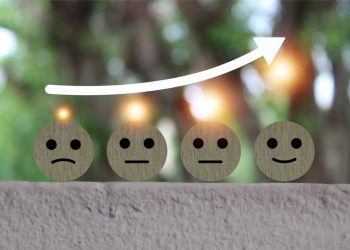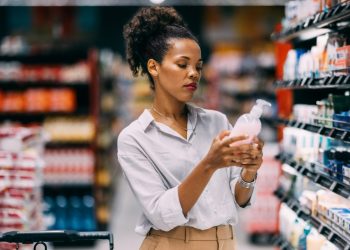 RISMEDIA, March 28, 2008-(MCT)-When hard-charging former Texas Instruments exec Kathy Charlton offered Bordeaux winemaker Benoit Murat a job in her new winery on the Pacific Ocean side of Seattle in 1999, he wondered if she was serious.
RISMEDIA, March 28, 2008-(MCT)-When hard-charging former Texas Instruments exec Kathy Charlton offered Bordeaux winemaker Benoit Murat a job in her new winery on the Pacific Ocean side of Seattle in 1999, he wondered if she was serious.
“I didn’t even know they made wine in Washington.”
When Rob Griffin told his professors at California’s famed UC Davis wine school in 1977 that he was going to Washington to make wine, they tried to talk him out of it.
“They said it was too cold to make wine there.”
Well, surprise, surprise. Today there are 500 wineries in Washington, growing 20 kinds of grapes, selling $3 billion worth of wine a year-more than any other state but California.
Wine-fan tourists are catching on, realizing there’s a welcoming, uncrowded new wine country to visit without the disheartening dollar-to-euro conversion of going abroad. Where you can visit industry giants like Chateau Ste. Michelle, which puts out 4.5 million cases a year from an 87-acre wooded park with strutting peacocks, tasting and tour, and an outdoor amphitheater where you might see Harry Connick Jr. or Stevie Wonder. Or mom-and-pop operations like Wind River Winery, where you’re as likely to be welcomed by Daisy, the winery dog, as owners Kris and Joel Goodwillie, and where you’ll taste their spicy syrah on an outdoor deck with a fabulous view of snow-capped, 11,249-foot Mt. Hood.
This is the tour for couples in which one is wine-obsessed and the other indifferent-one in which you can visit six wineries a day if you want, or spend an hour instead at a lavender farm straight out of Provence. Or visit art galleries, tasting rooms and white-tablecloth restaurants in a surprisingly sophisticated university town called Walla Walla. Yes, like the onion.
And if you’re a history buff, you can drive the length of the Columbia River, checking off historical markers that tell what happened to Lewis & Clark as they navigated their canoes and pirogues down those wild waters to become the first white men to cross from St. Louis to the Pacific Ocean in 1804-06.
Oh, and the wine: Starting in the 1970s with cool weather white wines such as Riesling and pinot gris, Washington has branched into such red wines as merlot, barbera and the wine that many say will put the state on the enological map-hearty, spicy syrah. Today the state grows 20 varieties-from mainline cabernet sauvignon to the obscure Madeleine angevine, a hybrid from the cool, damp regions of Eastern Europe. Why so many?
“Because we can,” says Craig Leuthold, a former jacket- and- tie exec out of Spokane who gave up the wholesale plastics biz and built a winery called Maryhill, overlooking the historic Columbia River. “We have so many micro- climates, so many soil types that we can do a lot of things.
“Down there by the river,” he says, gesturing, “there are two plots of zinfandel no farther apart than Tiger Woods can hit a golf ball. One of them gets ripe two weeks earlier than the other. That’s how varied the conditions are.”
The grounds at Chateau Ste. Michelle are flowered, beautiful, with strutting peacocks puffing out tail feathers in proud greeting.
While they make the wines here, they don’t grow the grapes here. It’s too wet on the rainy, western side of the Cascade Range. The grapes come from South Central Washington, in the huge, semi-arid Columbia Valley, irrigated by the Yakima and Columbia Rivers.
There’s plenty here to taste: A tart- and- lemony 2005 chardonnay ($ 15), a 2003 black cherry scented cabernet sauvignon ($ 17), a sweet, peach- flavored 2006 Muscat Cannelli dessert wine.
A half-day drive east out of Woodinville takes visitors through the Cascade Mountains, past 14,000-foot Mt. Rainier, into the near-desert of Eastern Washington.
This is the Yakima Valley; stretching to the horizon are parched, treeless, shallow hills bearing beige dry grass. The valley itself is an artificial oasis-a lush, green strip from one to five miles wide on both sides of the Yakima River. Here starts the Washington Wine Trail.
Two hours east is Richland, at the southern end of the Yakima Valley. Local winemaker Rob Griffin describes his Barnard Griffin Winery as “a bootstrap, hardscrabble operation,” but he’s being coy. He makes 70,000 cases a year of wine and has a wall full of trophies.
He got the wine bug as a kid, visiting his uncle’s farm in Napa, and got his wine degree from the top- rated enology program at the University of California’s Davis campus. ” I love to make wine, but I drive marketers crazy because I make too many varieties for them to sell,” Griffin says.
His wines are some of Washington’s best: A tartpear-flavored 2006 pinot gris ($17), a cranberry scented 2006 rose of sangiovese ($11), a mellow, mulberry- and chocolate-flavored 2005 malbec ($35).
An hour closer to Walla Walla, a right turn on dusty Frog Hollow Road leads to a bit of France in Washington-a lavender farm. Karen Grimaud majored in French in college, moved to France, married Frenchman JeanPaul Grimaud and brought him back to Walla Walla. He became a professor of French at the local college. She took up the quintessentially French occupation of growing lavender.
Her two-acre patch in the bright sun and cool air is vivid with color and scent, alive with buzzing bees. Grimaud sells sachets and dried bouquets, plus alimentary grade lavender for flavoring whipped cream, caramel or, with a good grinding of black pepper, a nice marinade for pork or lamb. She offers guests glasses of intriguingly scented lavender lemonade. It’s aromatic, tasty. Walla Walla, Wash., pop. 30,000, is named for the Nez Perce word for “many waters.” Built first as a stopping- place for pioneers entering from Idaho on the trek West, the city today is an oasis of sophistication, in part because of Whitman College, which dominates the city.
It’s quickly becoming a wine town, and vintage downtown buildings-including a notorious 1800s brothel-are being renovated into wine tasting rooms, jewelry stores, and art galleries. Gourmet restaurants are springing up.
The wine-themed restaurant called 26 Brix (it’s a term for describing the ripeness of grapes at picking), serves Dungeness crab cakes with a rich, local Dusty Valley chardonnay, or hangar steak with a smooth and powerful local Romus syrah.
Walla Walla is also an oasis of bed- and- breakfast mansions. Green Gables Inn, built in 1909, is a big old bungalow in the Craftsman style on an idyllic street lined with mammoth trees. Inside there’s a huge, wood-beamed living room, and cozy bedrooms with homey, frou-frou quilts and curtains.
Basel Cellars, a few miles south of Walla Walla, is easily the fanciest winery in Washington. It was built for $14 million as a luxury resort in the style of the great national park lodges-all open beams and log- bound glory, for only 18 guests. Later it became a winery.
Lindsey Brammer, running the tasting room, pours samples: A crisp, intensely fruity sauvignon blanc ($18), a lean and tannic cabernet sauvignon ($20) and a generous, licorice- scented syrah ($42) from 87 acres of its own grapes plus other grapes from around the Columbia Valley.
Heading out of Walla Walla now, west toward the Pacific Ocean, the wine route reaches the Columbia River. Fifty miles west along the Columbia is Maryhill Winery. Leuthold, its co-owner, is a man at peace. He sits in a canvas director’s chair on his winery’s outdoor balcony, tousling the creamy coat of Potter, his docile, 130-pound Great White Pyrenees so-called guard dog.
In front of him is a modern, 55,000-case-a-year winery. Over his shoulder, green rows of vines run down to the broad, dark Columbia River. Across the river in Oregon is the snow-clad peak of Mt. Hood, a presently dormant 11,249-foot volcano.
Maryhill’s wines include a 2006 Wildflowers white blend of chardonnay, sauvignon blanc, semillon and viognier that’s complex, tart and lush ($14), a 2004 sangiovese with lots of oak and black cherries ($26), and a 2004 zinfandel with a walloping 16% alcohol ($36).
Another two hours west, then 10 miles up the White Salmon River past Husum, pop. 2,000, is the Wind River Winery. Its website says it’s open 10 a. m. to 6 p. m. And when we arrive at 10:20 a.m., it is, indeed, open. They never said there’d be anybody there.
We’re greeted by Daisy, the winery dog. We hesitate, then enter the tasting room, grab wine glasses and half a dozen already-open bottles and retire to the wooden deck outside.
Later, winery employee Ryan Durgan shows up, welcomes us and brings out more wine. Says the owners are in Los Angeles for a bar mitzvah.
This is the winery with the view. Sitting in plastic lawn chairs on the deck, sipping syrah, we look south over long, lime-green rows of Riesling vines, past a dark pine forest, across the Columbia River at the sharp, snowy top of Mt. Hood.
“We just sit here and look at the mountain sometimes,” says Durgan, grinning. “It isn’t too stressful.”
A Wind River tasting includes a sweet, grapey Riesling from Silvertooth Vineyard ($15), a firm, peppery lemberger from Celilo Vineyard ($25) and a very impressive syrah from Horse Heaven Hills, with black cherries and bitter chocolate flavors ($25).
For those familiar with coastal Washington’s rainy climate, it’s a surprise that there are vineyards west of the Cascade Range as well. An hour’s drive from Seattle is Port Townsend, on the Strait of Juan de Fuca. It’s a collection of Victorian mansions built in the late 1800s _ today a relaxed weekend getaway resort for over caffeinated Seattleites.
The Ann Starrett Mansion is a grand, ornate old structure built in 1889 for the opulent sum of $ 6,000. Chock with gables and turrets outside, its architectural highlight inside is a free-standing, three-tiered staircase.
A few miles out of town is the nicely renovated old barn that is home to Olympic Cellars, which in turn is home to Working Girl Wines. Founded by Texas Instrument exec Kathy Charlton, who took early retirement in 1999 at age 51, it makes a feminist statement. Giving pieces of the action to two female friends and hiring a French winemaker, she has parlayed it into a 25,000- case- a- year winery with distribution in 20 states. Part of the profits go to women’s health charities, in return for volunteer help at harvest time.
It was after much debate that they chose the name Working Girl Wines.
“We know the name has implications,” says retail manager Molly Rivard, grinning. “We’re willing to live with the consequences.”
Rivard and Benoit Murat offer samples of their nonvintage Rose the Riveter, a rose made of lemberger, a red grape from Eastern Europe; it’s sweet and crisp, with raspberry flavors ($14), and nonvintage Go Girl Red, of lemberger and merlot, soft, juicy red plums, fully dry ($14), and their 2006 Vin Nouveau, of Madeleine angevine and Madeleine sylvaner grapes, sweet and soft and grapey ($13).
The nouveau, made of hybrids from the cool, damp regions in northern Germany, is the only one made of grapes grown on this rainy side of Seattle. The rest come from vineyards in the Columbia Valley.
Most experts say it’s too cool and wet here to grow the better-known grapes like pinot noir or chardonnay.
But Murat is hopeful: “I think I can do it.”
It’s the kind of spirit that for more than 20 years now has been creating Washington State’s new wine country.
IF YOU GO:
– Chateau Ste. Michelle, Woodinville; www.ste-michelle.com, 425-488-1133 or 800-267-6793.
– Barnard Griffin Winers, Richland; www.barnardgriffin.com, 509-627-0266.
– Reininger Winers, Walla Walla; www.reiningerwinery.com, 509-522-1994.
– Basel Cellars Estate Winery, Walla Walla; www.baselcellars.com, 509-522-0200 or 888-259-WINE.
– Maryhill Winery, Goldendale; www.maryhillwinery.com, 877-627-9445.
– Wind River Cellars, Husum; www.windrivercellars.com, 509-493-2324.
– Working Girl Wines, Port Angeles; www.workinggirlwines.com, 360-452-0160.
WHERE TO STAY:
– Green Gables Inn, bed and breakfast, 922 Bonsella, Walla Walla; www.greengablesinn.com, 509-525-5501 or 888-525-5501. Rooms, $154-192.
– Ann Starrett Mansion, (bed, no breakfast), 744 Clay St., Port Townsend; www.starrettmansion.com, 800-321-0644. Rooms, $159-198.
For more information about Washington Wine Country, visit www.winecountrywashington.org or call 206-285-0514.
© 2008, The Miami Herald.
Distributed by McClatchy-Tribune Information Services.










